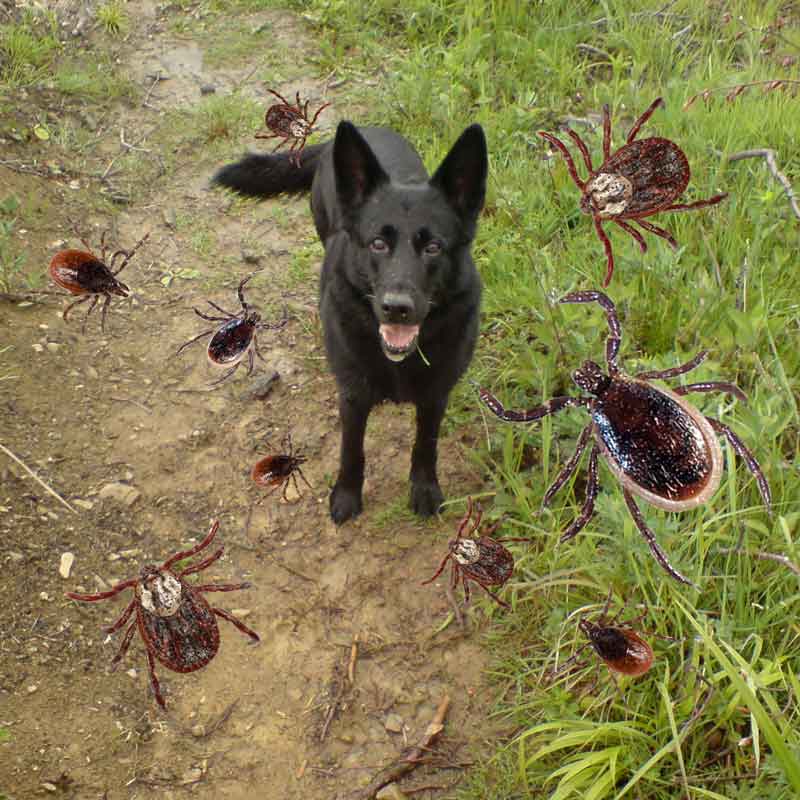In Germany, the tick-borne meningitis or encephalitis is currently spreading. Since more TBE cases were reported in 2020 than ever before (since data collection began in 2001), the RKI therefore classified five more regions in Germany as risk areas.
But is this also dangerous for our dogs?
Well, as far as TBE alone is concerned, rather less so, since dogs only rarely become seriously ill from the viral pathogens transmitted by the European castor bean tick.
But it can be assumed that the increased transmission of pathogens will not only be limited to TBE and that dogs will also be exposed to a higher risk.
Therefore, a brief overview of the possible transmission of pathogens.
Diseases that can be transmitted from ticks to dogs:
- Babesiosis
The pathogens (babesia) transmitted by the ornate dog tick (dermacentor reticulatus) destroy the red blood cells. In an acute course, the diseased dogs show high fever 10-21 days after the bite by the tick, no longer eat and appear lethargic. Followed by vomiting, diarrhea and acute kidney failure. Some animals show a gradual course of the disease with episodes of fever, which is why it is often referred to as “canine malaria“. - Lyme disease
The main carrier of the bacteria (borrelia) is the European castor bean tick. In some dogs, after infection, there is inflammation of the joints, otherwise symptoms such as fatigue, loss of performance, fever or even neurological deficits. - Anaplasmosis
Also transmitted by the European castor bean tick, these single-celled blood parasites attack white blood cells. The disease can extend over several years and progress in phases. - Tick-borne encephalitis (TBE)
As already mentioned at the beginning, dogs, in contrast to humans, rarely contract this viral pathogen. The vector is the European castor bean tick. - Ehrlichiosis
Originally widespread in Mediterranean countries, ehrlichiosis has now already been detected in Germany. Carrier of the bacterium Ehrlichia canis is the brown dog tick (Rhipcephalus sanguineus). An outbreak of the disease with fever, bleeding, respiratory distress and other symptoms usually occurs 1-2 weeks after infection.
If the dog becomes ill or at least seems ill, it is of course advisable to visit a veterinarian as soon as possible and to inform him of an (increased) tick infestation. The veterinarian can then systematically begin with the containment and diagnosis.
Also have a look at these articles for natural tick prevention:
Margosa extract – Naturally effective defense against ticks for dogs without chemicals
Geraniol as a natural tick repellent for dogs






